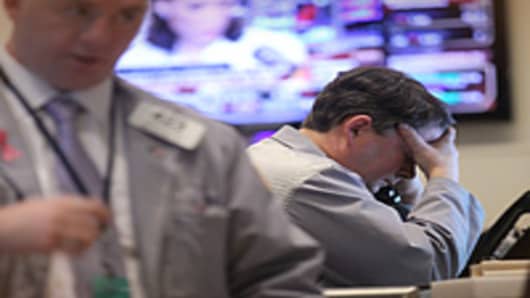The Knight Capital trading fiasco, bad as it is, looms even worse because similar high-speed trading problems are likely to keep on roiling the markets and fueling investor mistrust.
Anger and gloom swept across trading floors Thursday, the day after the New York-based trading firm reported a software malfunctionthat caused a surge in volume at the market open Wednesday and violent price swings for nearly 150 stocks.
Few if any were cheering the misfortunes of Knight , whose very survival is challenged by the scandal.
But the biggest concerns were for the retail investors who are likely to continue to flee the market.
"You can only assume that these glitches are going to continue into the future," says Todd Schoenberger, managing director of the BlackBay Group in New York. "This is a huge, huge negative. It's another black eye for Wall Street. This is not good for the retail investor. How are they supposed to trust what we do?"
Knight blamed the malfunctions on a software upgrade and said the episode would cost a whopping $440 million, a burden that will force the company to raise capital to cover.
The price tag on a market that already had been bleeding investor money is yet to be determined.
"So many good people are getting hurt in a very bad way, so many people in many industries. This hurts all of us," says Sal Arnuk, partner at Themis Trading, an independent brokerage in Chatham N.J. "It hurts folks like us because when confidence is diminished people pull their money out of the market. When people pull their money out of the market my customers — institutions, mutual funds — trade less."
Indeed, investors have been taking their money out of equities and putting it into bond funds for most of the last three years, a situation that has been particularly acute since the Flash Crash of May 6, 2010. That event also was blamed on high-frequency tradingand saw the Dow industrials lose nearly 1,000 points in a few minutes before recovering.
Similarly, the stock marketbounced back Wednesday, but the smell of more trading chaos filled the air.
"Diminished commissions affect all brokers," says Arnuk, co-author with his partner, Joseph C. Saluzzi, of Broken Markets: How High Frequency Trading and Predatory Practices on Wall Street are Destroying Investor Confidence and Your Portfolio (FT Press, 2012). "Trust me, we take no glee in watching these events unfold time and time again. Certainly, we don't benefit from the misfortune of our brothers in the industry."
Knight is a large player in the business, handling about 15 percent of the daily trading volume on the New York Stock Exchange, but is largely unknown outside of the HFT sphere. The irony of its current situation is acute: The firm's slogan is "The Science of Trading, the Standard of Trust," and its trading floor figured in heavily during the movie, "Wall Street 2: Money Never Sleeps."
Market pros wondered about the firm's future, both because of the capital hit it will take as well as the public relations nightmare that likely will persuade clients to take their business to other firms. Fidelity and Vanguard already reportedly have severed ties with Knight.
"They just took a huge capital hit. All of a sudden you have to constrain a lot of your trading activities," says Michael Cohn, a former specialist on the NYSE and now chief market strategist at Atlantis Asset Management in New York. "They're basically going to have to sell a stake in themselves in order to get back to where they were in terms of freedom to trade."
Ironically enough, Cohn and others mostly praised Knight for the way it handled the situation, coming clean both to clients and at the exchange about its problems.
"They were very smart in just saying 'cover.' They didn't try and trade out of the position," Cohn says. "What you do is you basically cut off a position so it doesn't do any more damage. But what happens is whoever is providing capital to them has been spooked."
"Knight responded admirably. They let their customers know that clearly technological glitches happen. They didn't cry. They're falling on their sword, but truly it is a sword. They're going to be hurt," Arnuk adds. "I don't want to fuel speculation as to whether Knight will make it or not. All I can say is I hope they do."
Market veteran Art Cashin, the head of floor operations at the NYSE for UBS, said the growth of other trading platforms has made it more difficult to catch high-frequency mistakes.
"None of the trades that occurred during the Flash Crash had to be canceled" at the NYSE, Cashin told CNBC. ""If we were still the vastly dominating trading force then you would have been able to stop it completely and quickly."
With Knight's survival an open question — the stock is off more than 70 percent from its Wednesday open — the broader issue may be what actions might finally be taken to address the HFT problems.
Traders who trumpeted the market's automation are now calling for more humans to be involved who might have flagged the bad Knight trades.
"At the end of the day this could swing the pendulum toward more human interaction in the markets, more traders on the floor," says Dave Lutz managing director of trading at Stifel Nicolaus in Baltimore. "This is absolutely going to result in some changes."
—By Jeff Cox, Senior Writer, CNBC.com.
Questions? Comments? Email us at NetNet@cnbc.com
Follow Jeff @ twitter.com/JeffCoxCNBCcom
Follow NetNet on Twitter @ twitter.com/CNBCnetnet
Facebook us @ www.facebook.com/NetNetCNBC



